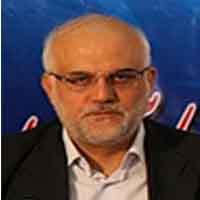Lightweighting in Iranian Architecture: From Structural Solutions to Integration with Architectural Space, with an Emphasis on the Dome of Soltaniyeh
Iranian architects, to stabilize historical structures, opted for reducing weight and lightening the construction instead of adding complexity. Aesthetic beauty was also important to them, and in this regard, they devised solutions that, in addition to reducing weight, also preserved the beauty and functionality of the structure. Lightweighting in Iranian architecture initially was a simple structural solution, but later architects were able to combine this structural solution with architectural approaches. While lightening the load, they created beautiful architectural spaces. The mausoleum of Mohammad Khodabandeh in Soltaniyeh, as one of the largest funerary buildings of the Islamic era in Iran, is a complex structure in which combined lightweighting techniques such as boxing (sanduqeh kardan), interlocking (kenobandi), and bracing (ghayd kardan) have been employed. It seems that this combined structural and architectural approach can be considered one of the most effective factors in the stability of the Dome of Soltaniyeh. This research seeks to answer the question: How were lightweighting solutions in historical structures developed in Iranian architecture, from a simple structural solution to the integration of structure and architecture for beauty while considering structural requirements? And how were these cases applied in the Dome of Soltaniyeh? This research is fundamental in its objective and has been conducted using a descriptive-analytical method. Information and data were collected through library studies in lightweighting and its types, along with field surveys in the case study. The research results showed that the use of techniques such as decreasing thickness from the base to the apex of the dome, the use of a double-shelled dome, as well as the presence of internal and external iwans, led to a reduction in the weight of the structure alongside the creation of unique architectural spaces.
-
Volume geometry and Islamic architecture in the treatises of Muslim mathematicians
Aref Azizpour Shoubi, *, Yasser Shahbazi
The History of Islamic Culture and Civilization Quarterly Journal of Research, Autumn 2024 -
Evaluation of Creative Regeneration based on Local Economy in the Historical Area of Blue Mosque in Tabriz City
*, Morteza Mirgholami, Aynaz Nahidi Azar, Elahe Mokhtari
Journal of Urban Economics, Spring and Summer 2025 -
Investigating the effect of particle shape on energy components in granular media under cyclic loading by discrete element method
Haleh Meshginghalam, Mehrdad EMAMI Tabrizi *, Mohammadreza Chenaghlou
Amirkabir Journal of Civil Engineering, -
Evaluation of the Structural Behavior of a Novel Self-Centering Beam-Column Connection with Friction Damper In Comparison To Existing Connections
Mahsa Saeidzadeh, MohammadReza Chenaghlou, Arash Akbari Hamed *
Journal of Civil and Environmental Engineering University of Tabriz,



